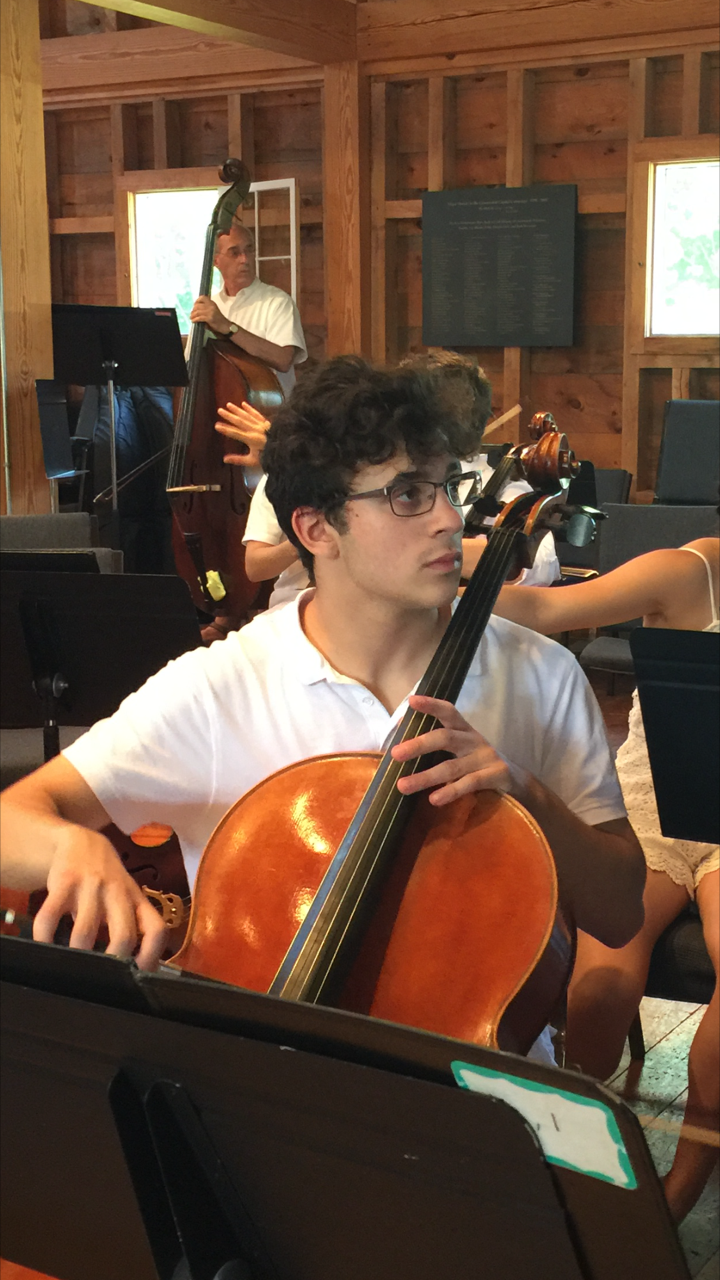Georg Philipp Telemann (1681-1767) :: Wassermusik, VII. The Tempest: The Stormy Aeolus
In 1722, Telemann applied for the newly vacant position of music director at St. Thomas (Thomaskantor) in Leipzig. He had long since established himself as one of the most prolific and talented musicians in the region, so it comes as no surprise that he was easily a top (if not the top) candidate. How much he actually wanted the job is another question. It seems more likely that he used it as leverage when bargaining for a raise (both in finances and respect) at his then current position in Hamburg. Having successfully settled with Hamburg, he declined Leipzig that November. His good friend, Johann Sebastian Bach (the 3rd choice for the job), got St. Thomas.
The following April, with the dust settled, Telemann was tasked with writing music to celebrate the 100th anniversary of the Hamburg Admiralty. One piece was an orchestral suite, Wassermusik (or Hamburger Ebb und Fluth), and another was an oratorio, Hamburger Admiralitätsmusik. Following the French suite style that Telemann had perfected earlier in his career, each “movement” is based off a dance (Sarabande, Gavotte, etc.). Interspersed throughout are a handful of programmatically titled movements unconnected to a specific dance form, including The Stormy Aeolus, named for the Greek mythological character.
Kate Soper (b. 1981) :: Here Be Sirens, O Sailor
In 2013 Kate Soper premiered Here Be Sirens, an opera-meets-theater piece based on the ancient mythological figures whose mesmerizing songs lured sailors too close to the rocks, where peril would meet them. Soper’s take on the myth zooms out, focusing not on the part of the story we usually hear from the perspective of the sailors, but imagining the sirens’ quotidian existence as they “...kill time on their island,” awaiting “an endless procession of doomed sailors.” Rounding out the personalities of each siren, the audience learns that “Peitho revels in the luxurious sensuality of their rite; Phaino stonily enacts the ritual with no inner feeling; and Polyxo longs for escape into the world of the real, delving into centuries of scholarship and research on her species in an attempt to untwist their circumstances.”
In addition to her own text, Soper utilized the words of a wide range of authors including Plato, Homer, Dante, and Edna St. Vincent-Millay, amongst others. O Sailor represents an iconic moment of the myth—the sirens’ song, itself.
Lili Boulanger (1893-1918) :: Les Sirènes
In Paris, 1913, the Russian composer, Igor Stravinsky, shocked audiences with his music for the ballet The Rite of Spring. That same year, over at the Paris Conservatoire, Marie-Juliette Olga Boulanger (always known simply as “Lili”) sent out shock waves of her own as the first female winner of the school’s prestigious composition award, the Prix de Rome.
If the name Boulanger sounds familiar to you, it’s most likely due to Lili’s older sister, Nadia, who always failed to win the Prix de Rome, but went on to have a brilliant career as a teacher with a studio list that read like a Who’s Who of 20th century music. Due to tragic circumstance, Lili never had the opportunity to fully build her musical life. She died heartbreakingly young, just shy of her 25th birthday, due to a lifetime battling chronic illness. But, if Lili’s life was brief, it was also brilliant. Her family (all musicians—her father had also won the Prix de Rome) recognized musicianship in Lili at the tender age of two, and by the time she was six, she was sight-reading alongside Gabriel Fauré at the piano.
Lili wrote Les Sirènes when she was eighteen years old, using text by Charles Grandmougin.
I’ll Fly Away/Wayfaring Stranger/Sinner Man
If you drive at dusk along the Blue Ridge Parkway, you can almost hear the mountains giving off the sound of a distinctly American vocal tradition called Sacred Harp, or Shape Note. These were simple gospel tunes and folk hymns sung in a full-throated, straightforward harmonic manner. Collected in various publications utilizing a method of music reading that helped singers learn more quickly through the use of differently shaped notes (hence the name), the tradition spread out from the Shenandoah Valley over to St. Louis, and down into the deep south.
One publisher of these songs was a man called E.M. Bartlett from Waynesville, Missouri. Bartlett went to work for the Central Music Company, a publisher of Shape Note songbooks, and eventually founded his own publishing company. Subsequently, he founded and opened a Shape Note school called the Hartford Music Institute. A graduate of that institute was Albert Brumley who went on to write, I’ll Fly Away in 1932, during the depths of the Great Depression. About eighty years later, composer Caroline Shaw reimagined this song as part of a suite for string quartet and singer. She wrote the following about her arrangement:
“I wrote this set of songs to play with some very good friends of mine one spring. They're settings of lyrics from traditional gospel and bluegrass songs, but with a new melody (except for the occasional hint of the original) that follows conventions of both old time singing and medieval plainchant.” — C.S.
While we can trace the heritage of some songs, perhaps the greatest significance of the most enduring folk songs is in their anonymity. They belong to no one and everyone as part of the true public domain. Wayfaring Stranger and Sinner Man fall into this category. Their origins are unknown (though Les Baxter and Will Holt are credited for cementing a pressing of the latter in a 1956 recording).
-Kathryn J Allwine Bacasmot
Kathryn J Allwine Bacasmot is a pianist/harpsichordist, musicologist, music and cultural critic, and freelance writer. A graduate of New England Conservatory, she writes program annotations for ensembles nationwide.





